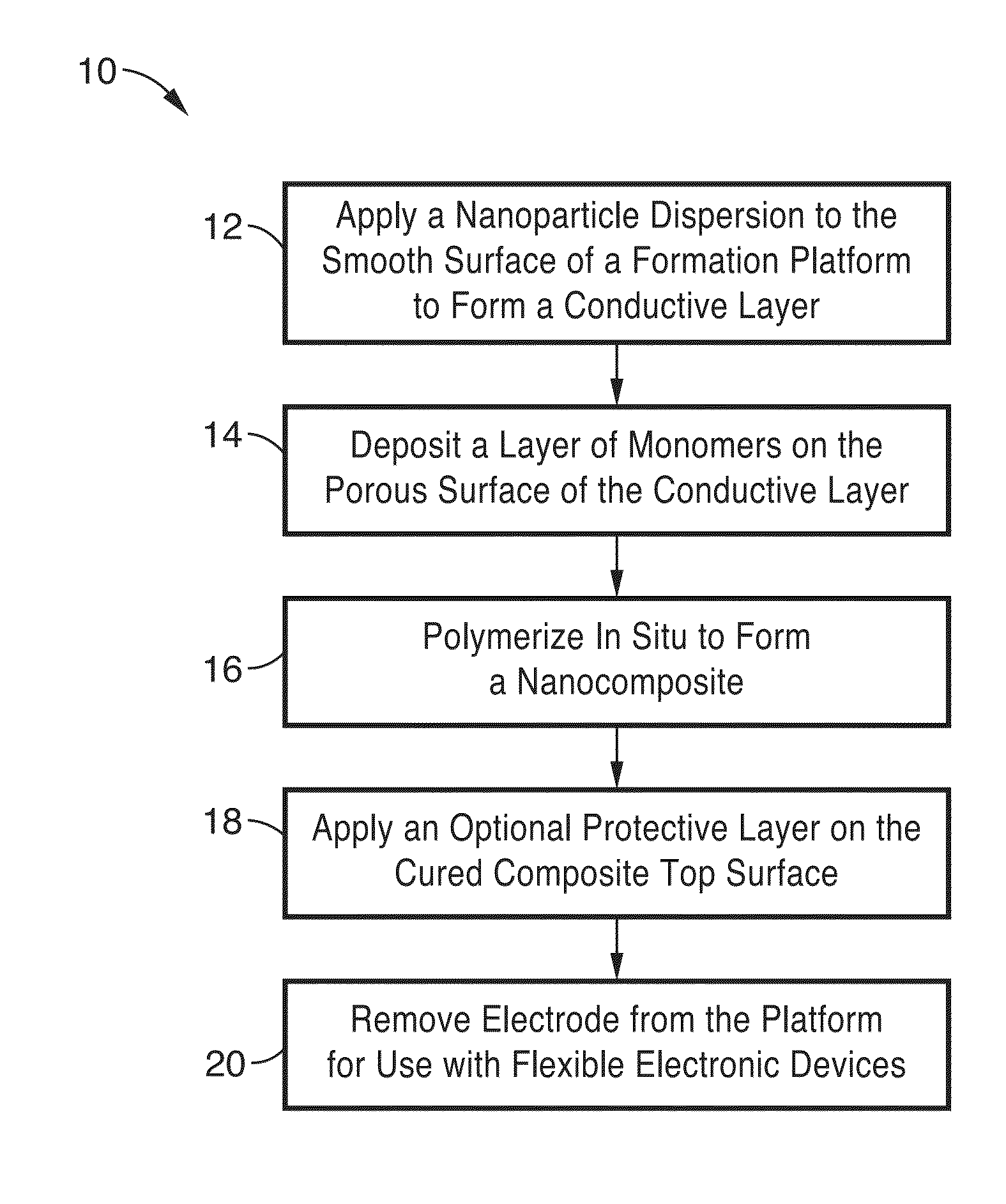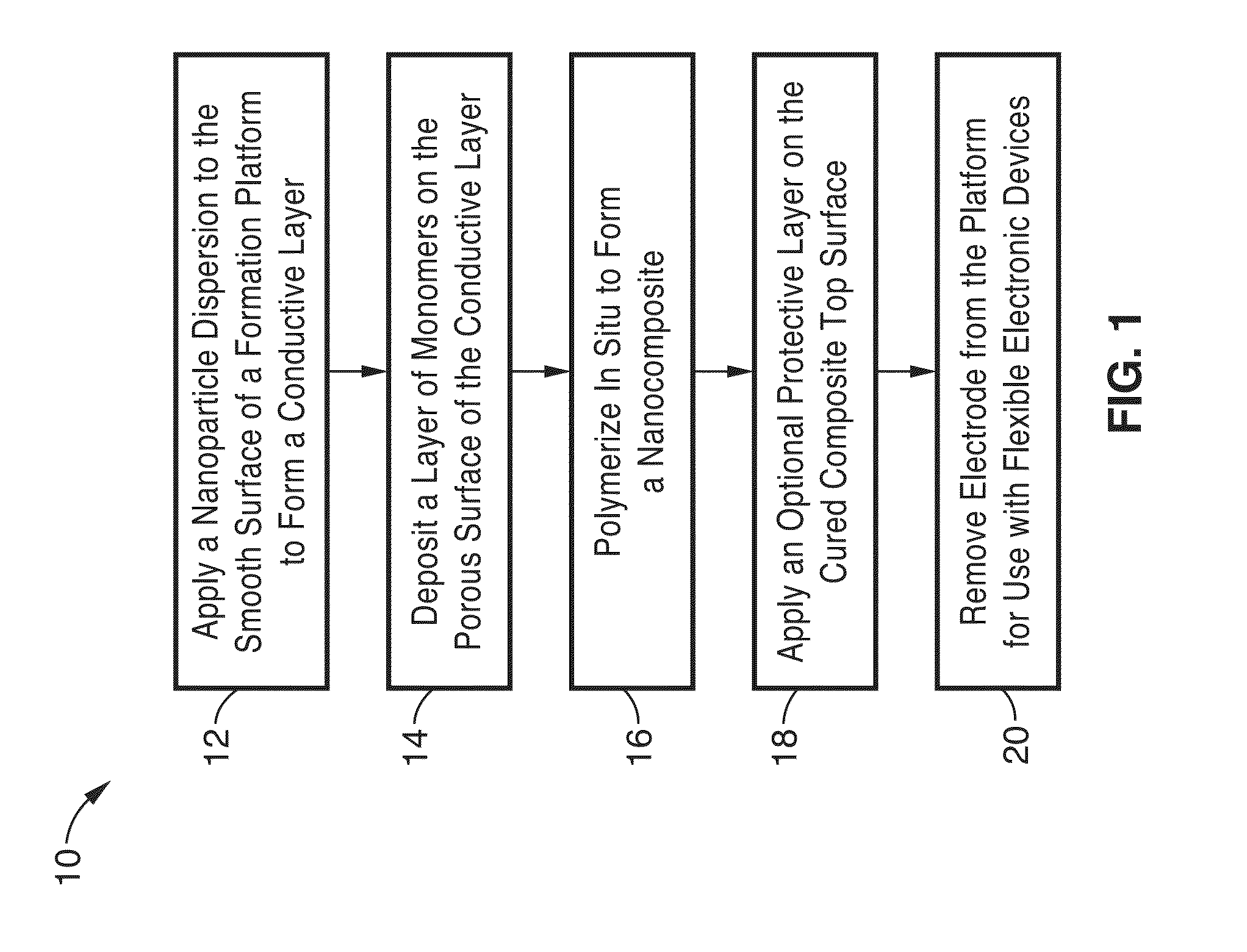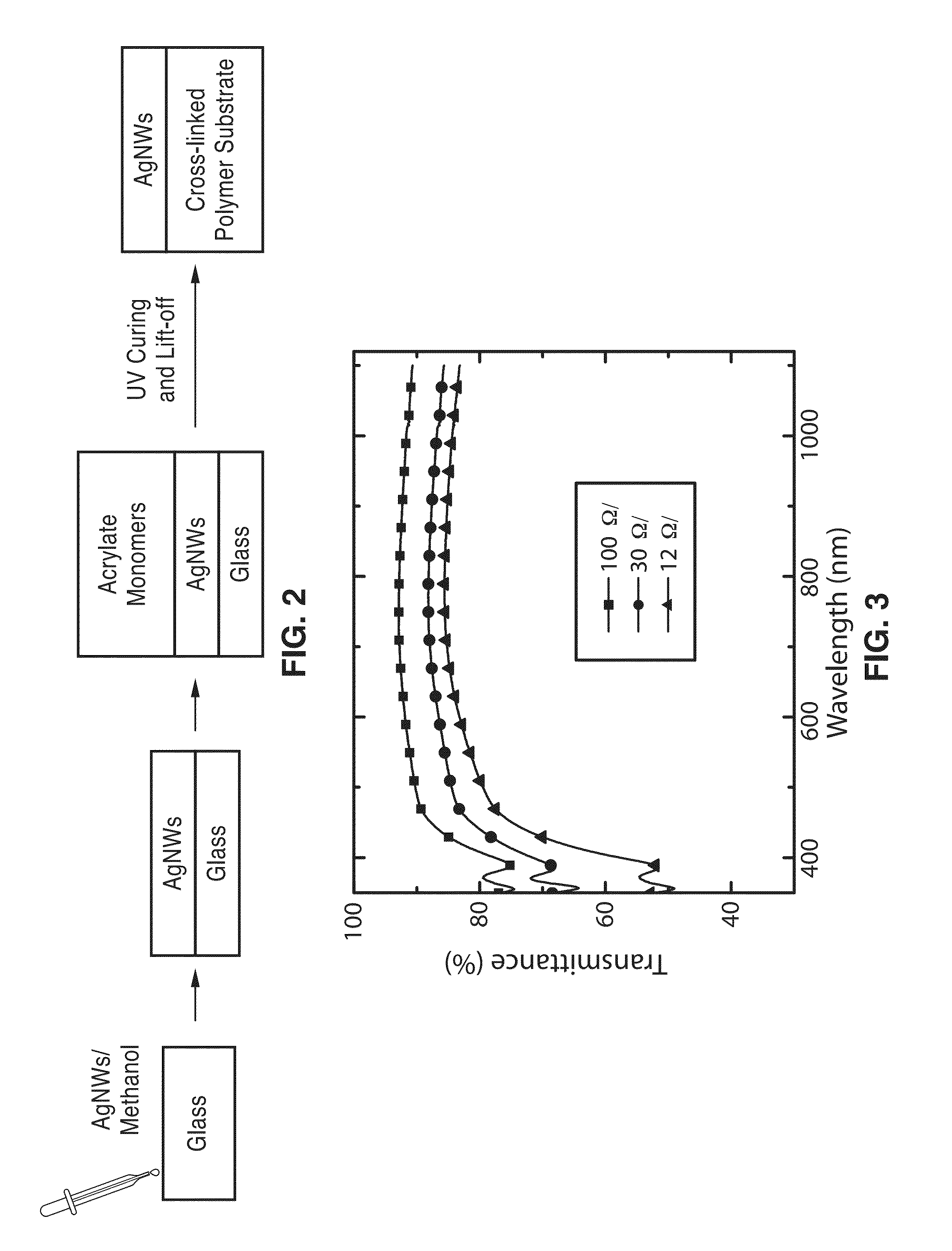Nanowire-polymer composite electrodes
a technology of nanowires and composite electrodes, applied in the direction of sustainable manufacturing/processing, instruments, final product manufacturing, etc., can solve the problems of device failure, increasing the cost of the device fabrication process, and the flexibility and performance of the device in the electrode construct, etc., to achieve excellent optical transparency, electrical conductivity, surface smoothness
- Summary
- Abstract
- Description
- Claims
- Application Information
AI Technical Summary
Benefits of technology
Problems solved by technology
Method used
Image
Examples
example 1
[0073]In order to demonstrate the invention, highly flexible silver nanowire (AgNW) electrodes on a cross-linked transparent polymethacrylate substrate were produced and evaluated. In this illustration, the flexibility of the AgNW electrodes was shown by bending up to 16% compressive strain with negligible change in sheet resistance. A 3.9X increase in sheet resistance was obtained at 16% tensile strain. The resistance change is recovered when the deformed electrode returns to its un-deformed shape. The AgNW / polymethacrylate electrodes that were produced were shown to have low surface resistance and high solvent resistivity together with strong adhesion and ultra-low surface smoothness.
[0074]The application of such electrode was demonstrated first in the fabrication of solution-processed PLEDs and compared with the device with commercial available ITO electrode. The efficacy of the PLEDs reached a maximum value of 14.0 cd / A, which was higher than the control devices using ITO anode....
example 2
[0080]The durability and conductivity of the AgNW electrode produced in Example 1 were evaluated. The AgNW / polymethacrylate electrode surface was subjected to repeatedly adhesive tape adhesion and peeling. No nanowires were apparently peeled off of the electrode surface. The sheet resistance was found to remain unchanged after 10 cycles of the Scotch tape test.
[0081]To compare the durability of the electrode with conventional films, two AgNW films were prepared: one by vacuum filtration and the other by a Meyer rod coating process. The first electrode film was made by vacuum filtration and transferred to plastic substrate by pressing the filter cake and lift off of the filter media. The sheet resistance-transmittance of electrode was 13Ω / sq and 85% transmittance at 550 nm. The second AgNW film that was formed by Meyer rod coating had a sheet resistance of 20Ω / sq and 87% transmittance at 550 nm. After scotch tape text, all AgNW layers were shown to be removed from both coatings. This...
example 3
[0084]Flexibility of AgNW electrode was also evaluated. Surface resistance change (R / R0) of the AgNW / polymer electrode with tensile and compressive strains are shown in FIG. 4. The inset of FIG. 4 shows the resistance change of an ITO / PET substrate upon tensile strain where the initial sheet resistance was 40Ω / sq.
[0085]The polymethacrylate film has a glass transition temperature (Tg) of 110° C. The network polymer imparts shape memory property to the AgNWs / polymethacrylate electrode. When heated to higher than 110° C., the electrodes could be stretched by up to 16% and bent to small curvature radii. Upon cooling to below 110° C., the deformed shape was “frozen.” The deformed electrodes relaxed from the temporary shape to the original ones when the deformed ones were heated to above Tg without the application of external tension or compression. Various temporary shapes were also created.
[0086]The resistance change of the AgNWs / polymethacrylate electrode was measured as a function of ...
PUM
| Property | Measurement | Unit |
|---|---|---|
| Temperature | aaaaa | aaaaa |
| Thickness | aaaaa | aaaaa |
| Height | aaaaa | aaaaa |
Abstract
Description
Claims
Application Information
 Login to View More
Login to View More - R&D
- Intellectual Property
- Life Sciences
- Materials
- Tech Scout
- Unparalleled Data Quality
- Higher Quality Content
- 60% Fewer Hallucinations
Browse by: Latest US Patents, China's latest patents, Technical Efficacy Thesaurus, Application Domain, Technology Topic, Popular Technical Reports.
© 2025 PatSnap. All rights reserved.Legal|Privacy policy|Modern Slavery Act Transparency Statement|Sitemap|About US| Contact US: help@patsnap.com



